Nick Leason's Impact on Kiteboarding Lift Foils


Intro
The evolution of kiteboarding has been a fascinating journey marked by innovation, experimentation, and the relentless pursuit of performance enhancement. One particularly notable figure in this domain is Nick Leason, whose contributions have significantly shaped the landscape of lift foils in kiteboarding. In this article, we will explore his pioneering work, the technology underlying lift foils, and how they are changing the game for riders at all skill levels.
Through a blend of modern design and engineering, lift foils offer unique advantages that enhance both recreational and competitive kiteboarding. From improved speed to the ability to glide effortlessly across the water, these advancements are not just gimmicks; they represent a fundamental shift in how kiteboarding is experienced. This narrative will peel back the layers on the technical aspects, delve into the manufacturing process, and forecast what the future may hold for riders and manufacturers alike.
While discussing Nick's influence, we will also touch upon various aspects of foil design, maintenance, and the most effective techniques for maximizing performance on the water. Riders, instructors, and enthusiasts will find valuable insights that go beyond the surface, enriching their understanding and skills in this exhilarating sport. Let's embark on this exploration, evaluating how Leason’s work continues to propel kiteboarding into new territories, crafting experiences that are exhilarating and accessible to all.
Prelude to Nick Leason
In the realm of kiteboarding, innovation is often the driving force that propels the sport forward. Among the few who have significantly impacted this domain is Nick Leason. His contributions to lift foils have not only changed how enthusiasts ride but have also redefined performance standards. By delving into Leason’s story, we uncover the motivations, trials, and breakthroughs that constitute the foundation of modern kiteboarding.
Background and Early Career
Nick Leason's journey in sports began long before he stepped foot on the water. Growing up near the ocean, he was drawn to the waves and the wind from an early age. Early days were filled with experimenting with different water sports, spending countless afternoons learning the ropes of kite surfing. Leason's fascination with physics and aerodynamics gained momentum during his teenage years, especially while he was studying engineering at university. His keen insights led him to understand the mechanics of lift and propulsion.
After college, Leason ventured into the engineering industry, gaining valuable experience in design and manufacturing processes. His time in this arena shaped his vision for how kiteboarding equipment could be enhanced. However, it wasn’t until his exposure to lift foiling that he realized its immense potential. The combination of his academic background and relentless curiosity positioned him perfectly to challenge conventional methods in kiteboarding.
Motivation Behind Innovations
Nick Leason's innovations stem not just from a love for kiteboarding, but also from a desire to push the envelope. Like many dedicated athletes, he sought performance gains that traditional boards couldn’t deliver. Watching fellow riders struggle in varying wind conditions ignited a fire in him. He wanted to contribute something that would elevate the overall experience — both on competition days and for leisurely rides.
Recognizing the limitations of existing gear, Leason evaluated how lift foils could optimize rideability. His vision transcended personal satisfaction; it was about fostering a more contagious enthusiasm for the sport among newcomers and veterans alike. Foiling represented a significant evolution in kiteboarding and Leason was not one to back down from a challenge. Hence, his journey took shape not only through rigorous experimentation but also through persistence in overcoming numerous setbacks. A hallmark of his work is the understanding that innovation is messy — filled with failures, adjustments, and revelations that ultimately lead to success.
As we explore further into Nick Leason’s role in lift foil development, the focus will shift to the specific innovations he introduced and how these have impacted kiteboarding today.
Understanding Lift Foils
Lift foils have made significant waves within kiteboarding, revolutionizing the way we perceive speed and maneuverability on the water. Their importance cannot be understated, as they represent a fusion of engineering excellence and the thrill of water sports. The following sections will unpack what lift foils are, delving into their mechanics and the advantages they bring to kiteboarding enthusiasts, both novice and expert alike.
What are Lift Foils?
Lift foils are essentially wing-like structures attached to the underside of a kiteboard, designed to create lift as the board moves through water. Similar in concept to the wings of an airplane, these foils enable the rider to glide above the surface, reducing drag and enhancing speed. The main components of lift foils include:
- Foil Shape: The hydrofoil design is crucial, comprising a mast, front wing, and rear stabilizer. Each element plays a role in generating lift and stability while navigating.
- Material Composition: Typically, foils are crafted from lightweight materials like carbon fiber or aluminum to ensure durability without unnecessary weight.
- Attachment Mechanism: Foils usually link to boards through a mounting system, allowing for easy detachment or adjustments based on rider preference.
Understanding the fundamental nature of these lift foils is paramount, as they have sparked a new interest and evolution in kiteboarding. As riders rise above waves, they experience a sensation akin to flying, awakening a freedom reminiscent of birds in flight.
Mechanics of Lift Foils
The mechanics behind lift foils can seem complex at first glance, yet they operate on fundamental principles of physics. The hydrofoil generates lift when the rider gains speed, thanks in part to the Bernoulli principle—an increase in fluid speed creates a decrease in pressure. Here’s how it happens:
- Increased Velocity: As the kite pulls, the rider accelerates, causing the water to flow faster over the curved top surface of the foil.
- Pressure Differentials: This flow reduces the pressure over the top of the foil while increasing pressure underneath, thus lifting the board out of the water.
- Angle of Attack: The angle at which the foil meets the water is essential. A correctly adjusted angle can help maximize lift while maintaining control, reducing the chance of cavitation and allowing seamless transitions.
In practical terms, these mechanics mean that lift foils require a different skill set from traditional kiteboarding. Riders must master not only the kite’s power management but also learn how to balance on a lifting board, finding that sweet spot of speed and stability.
The emergence of lift foils marks a pivotal moment in kiteboarding history, bringing with it enhanced performance capabilities. Riders can now harness speeds that once seemed implausible, practically hovering over water and carving turns like never before. Truly, understanding the workings and potential of these foils is crucial in the journey towards mastering the sport.
"The future of kiteboarding lies not just in speed, but in the artistry of lift, balance, and the thrill of the ride above the waves."
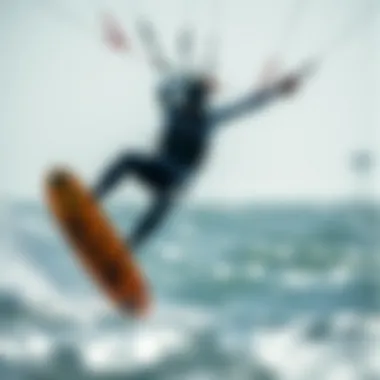
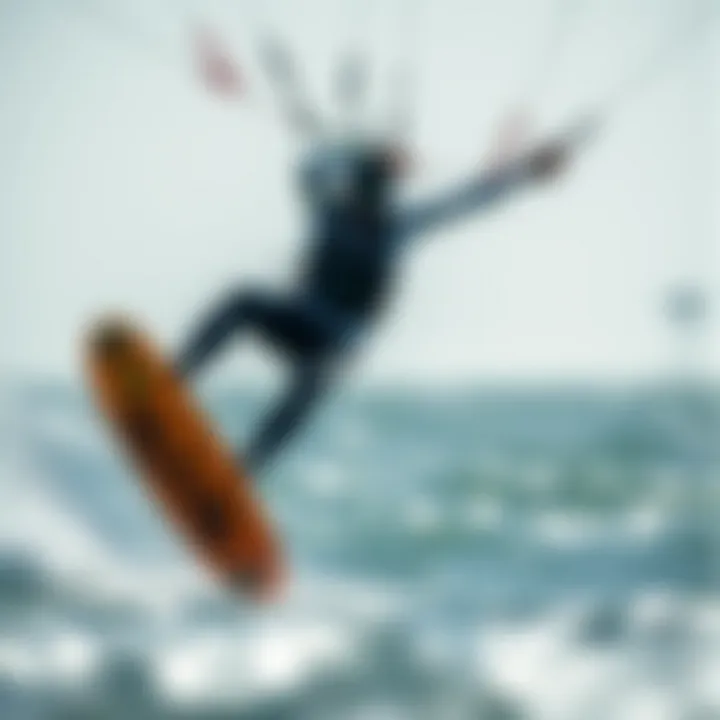
This comprehensive look at lift foils lays down a critical foundation for subsequent sections, exploring the influence that users like Nick Leason have had in bringing this technology to the fore.
The Role of Nick Leason in Lift Foil Development
Nick Leason stands as a pivotal figure in the landscape of kiteboarding, particularly in the evolution of lift foils. His contributions have not only pushed the boundaries of what these devices can achieve but have also reshaped the experience of riders around the globe. To understand his influence, it's essential to delve into the specific innovations he introduced and the collaborative efforts he engaged in.
Key Innovations Introduced by Leason
Nick Leason’s key innovations in lift foil technology can be broken down into several notable advancements:
- Hydrodynamic Design: Leason focused on refining the contours of the foils. By employing principles of hydrodynamics, he was able to enhance lift-to-drag ratios, translating to smoother rides and quicker accelerations. Each curve, every edge, is meticulously designed to optimize performance in diverse water conditions.
- Material Use: A major leap in the durability and responsiveness of lift foils is attributed to his dedication to experimenting with advanced materials. High-performance composites became a staple, allowing foils to withstand harsher conditions while remaining lightweight.
- Customizable Features: Recognizing that riders have varied preferences, Nick introduced customizable aspects to the lift foils. This includes adjustable wingspans, which enable users to tailor their rides based on skill level and environmental factors.
- Integration of Technology: One of Leason's standout contributions lies in the integration of smart technology within lift foils. By embedding sensors into the designs, riders can now access real-time data on performance metrics, greatly aiding in fine-tuning their skills and improving safety.
"Innovation isn’t just about new ideas; it’s about making something better for everyone involved."
Collaborations and Partnerships
Innovative thoughts seldom blossom in isolation. Nick Leason's journey through the realm of lift foils has been marked by fruitful collaborations:
- Research Institutions: Partnering with universities and marine engineering hubs has allowed Leason to access specialized knowledge and cutting-edge technology. These relationships have led to meaningful research that bolsters the scientific understanding of lift foil mechanics.
- Manufacturer Collaborations: Leason has worked hand-in-glove with various manufacturing companies to streamline production processes. This has resulted in improved supply chains and ultimately lower costs for consumers. By aligning his innovations with production capabilities, he ensured that more riders could benefit from his designs.
- Athlete Feedback: Engaging with professional and amateur riders alike, Nick ensured that the product development process directly responded to user needs. These partnerships have informed critical aspects of design and functionality, ensuring that each iteration of lift foils resonates with the kiteboarding community.
In summary, Nick Leason's central role in lift foil development is defined by his innovative spirit and collaborative efforts. His focus on design, material science, and community engagement continually pushes the limits of what’s possible in kiteboarding. Looking ahead, it’s intriguing to foresee how closely intertwined the advancements in lift foil technology will remain with rider experiences in the waters.
Advantages of Using Lift Foils
Lift foils have transformed the way kiteboarding is experienced, providing distinct advantages that can't be overlooked. As riders seek better performance and excitement in their sport, the significance of lift foils expands beyond mere innovation—they become essential to both recreational and competitive kiteboarding. Let's explore the specific elements, benefits, and considerations surrounding the advantages of using lift foils.
Increased Speed and Agility
One of the most enticing aspects of using lift foils is the notable increase in speed and agility they afford to riders. When a kiteboarder utilizes lift foils, the board is lifted above the water's surface, reducing drag significantly. This lift permits faster movements, allowing riders to slice through water with ease. It can feel like riding on a whispered breeze, as the board barely touches the choppy surface. The reduction in resistance means that riders can achieve higher speeds, reaching their desired adrenaline rush in record time.
Moreover, agility is greatly enhanced with lift foils. The lift and glide over water allow for quicker turns and more fluid maneuvers. Riders can dash between waves and perform tricks with greater precision. Think of it like driving a sports car on a racetrack versus a family van; the responsiveness of your vehicle makes all the difference in performance.
Key Benefits of Increased Speed and Agility:
- Effortless Turns: Pivoting becomes second nature; you can whip around obstacles with lightning speed.
- Jump Higher: Lift foils allow for bigger, cleaner jumps, creating more exhilarating aerial tricks.
- Enhanced Wave Riding: Foilboards can ride smaller waves with efficiency, making every outing count.
Enhanced Stability and Control
Stability and control are paramount in any water sport, and with lift foils, they are dramatically enhanced. The unique design of lift foils creates a lift force that stabilizes the board, especially at higher speeds. This is crucial when navigating through varied water conditions, where waves can be unpredictable. Riders often find that their balance improves significantly when using lift foils since the weight distribution accommodates the natural dynamics of movement.
With an increased sense of control, kiteboarders can navigate more confidently, trusting their equipment to respond predictably. The combination of lift and streamlined design promotes not just an effortless ride but one where the rider feels in command. The experience can transform from a mere sport into a symbiotic dance with the elements.
Points to Consider for Enhanced Stability and Control:
- Stable Ride: Enhanced lift keeps the board steady, minimizing the chance of nose-diving or instability during turns.
- Predictable Handling: Riders gain a reliable grip on how the board will react to their movements, increasing overall safety.
- Wind Variability: Better stability allows for confident navigation even in gusty conditions, improving performance in shifting winds.
With lift foils, kiteboarders experience not just a sport but a profound connection to the water and wind, leading to unprecedented exhilaration in every glide.
Overall, the benefits of lift foils—ranging from increased speed to enhanced stability—truly reshape the kiteboarding experience. As these innovations continue to evolve, one can’t help but ponder how they’ll further impact the future of this thrilling sport.
Applications in Kiteboarding

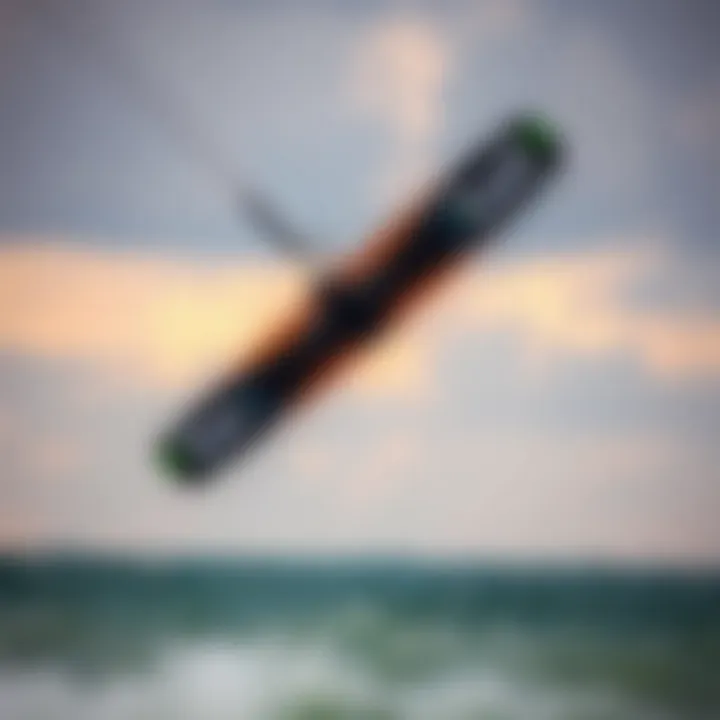
The world of kiteboarding is in constant transformation, making it essential to understand how lift foils enhance performance. The applications of lift foils in this sport are far-reaching, benefiting both competitive and recreational riders. From increased speed to improved control, lift foils are changing the dynamics of kiteboarding in ways many enthusiasts had not previously considered. This section highlights specific elements that showcase the advantages and considerations surrounding lift foils in the kiteboarding landscape.
Performance for Competitive Riders
In competition, every second counts—and this is where lift foils shine. They allow riders to achieve higher speeds without sacrificing control. The incorporation of lift foils equips experienced kiteboarders to take on aggressive moves and navigate through challenging courses more effectively.
- Speed Increase: Riders using lift foils can achieve remarkable speeds due to reduced drag. As they catch air, the ability to glide smoothly over the surface translates into quicker reaction times, essential when racing against the clock.
- Enhanced Dynamics: Competitive riders appreciate the additional lift provided by foils. This extra lift enables advanced maneuvers, such as jumps and aerial tricks, becoming not only more accessible but also more dynamic in execution.
- Stability in High Winds: The lift foils also help maintain control during high-wind conditions, where traditional setups may struggle. This stability allows riders to push their limits without fear of losing control, making it a game-changer on the competitive circuit.
"With lift foils, it’s like flying on water. One has the speed, but also the ability to maneuver deftly in tight spots—this gives a distinct edge in tournaments."
Recreational Use and Accessibility
While competitive riders often grab the limelight, lift foils are equally transformative for recreational kiteboarders. The accessibility of this technology means that more riders can enjoy kiteboarding without needing to be high-level competitors.
- User-Friendly Design: Many contemporary lift foils boast a straightforward design that caters to both beginners and seasoned riders. For newcomers, less complicated setups minimize the learning curve, making it easier to get on the water and feel confident.
- Versatile Experience: Recreational kiteboarders can explore different styles with lift foils. Whether they aim to enjoy a leisurely cruise or seek thrills from jumps, the adaptable nature of lift foils accommodates a varying range of riding preferences.
- Increased Enjoyment: The enhancement in experience is tangible. Riders find that lift foils provide a stronger sense of freedom on the water, encouraging exploration and greater connection to nature.
The Design Process of Lift Foils
The design process of lift foils is a crucial stage that lays the foundation for their performance and efficiency in kiteboarding. It's not merely about crafting an aerodynamic shape; it involves a delicate balance between material selection, function, and the end-user experience. This stage is where creativity meets engineering, and the outcome directly influences how riders interact with the water. The ultimate goal is to enhance their performance, stability, and overall enjoyment while out on the water.
Material Selection and Engineering
Material selection is one of the most vital aspects of designing lift foils. Different materials offer various properties, from strength to weight and flexibility. Lightweight materials, like carbon fiber and fiberglass, are often preferred due to their strength-to-weight ratio, making them ideal for the dynamic environment of kiteboarding. However, a designer's choice isn’t a shot in the dark; it's a result of meticulous research and testing.
For instance, carbon fiber provides excellent rigidity and can withstand the stresses encountered during rapid maneuvers. On the flip side, foam cores might be included in a design for their buoyancy, helping to maintain lift when the foil is in motion. This selection is all about striking a balance: using materials that are strong enough not to bend under pressure, yet light enough to allow for nimble movements on the water.
In this context, the engineering aspect comes into play, emphasizing the importance of structural integrity. Designs must withstand the unpredictable forces of nature without succumbing to fatigue. Engineers often employ techniques like computational fluid dynamics (CFD) simulations to assess how different materials might perform in real-world scenarios.
Testing and Prototyping
Testing and prototyping is where the theoretical concepts become a tangible reality. After creating initial designs, the next step involves making prototypes to see how they perform in action. This phase is essential to refine the lift foil's characteristics and to assess how close it comes to meeting design expectations.
Prototyping allows designers to experiment with various configurations before mass production. During this phase, they often conduct rigorous water testing, looking for insights into lift, drag, and overall responsiveness. Observations made during this stage can lead to adjustments in design or even material choices, ensuring that the final product delivers a superior experience for the rider.
A key part of testing involves gathering feedback from real-world kiteboarders. Their insights can illuminate aspects of the foil design that engineers might overlook. Many manufacturers bring in seasoned riders to test prototypes, who provide valuable input on performance nuances—like how the foil handles in tricky wind conditions or its stability at high speeds.
Ultimately, the prototyping phase is not just about finding what works but understanding what makes a lift foil truly exceptional.
"Good design is a lot like clear thinking made visual." – Edward Tufte
By integrating feedback into the design process, manufacturers can adjust their foils to meet varying styles and preferences among kiteboarders, creating products that enhance the sport itself and foster a deeper connection between rider and gear.
As kiteboarding continues to evolve, the commitment to innovative design will be a cornerstone of creating future lift foils that push boundaries and elevate riders' experiences.
For more detailed insights, resources such as Wikipedia offer a substantial foundation on the sport's history and advancements.
Future Trends in Lift Foils
As kiteboarding continues to evolve, lift foils are becoming an integral part of the conversation. The future of lift foils hinges on emerging technologies and innovative design approaches, enhancing both performance and the overall experience for riders. Understanding these trends is essential, not only for competitive kiteboarders but for enthusiasts who simply enjoy the thrill of the water.
Emerging Technologies
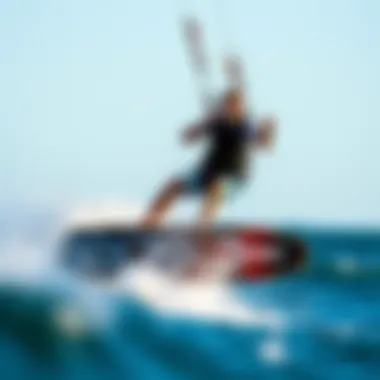
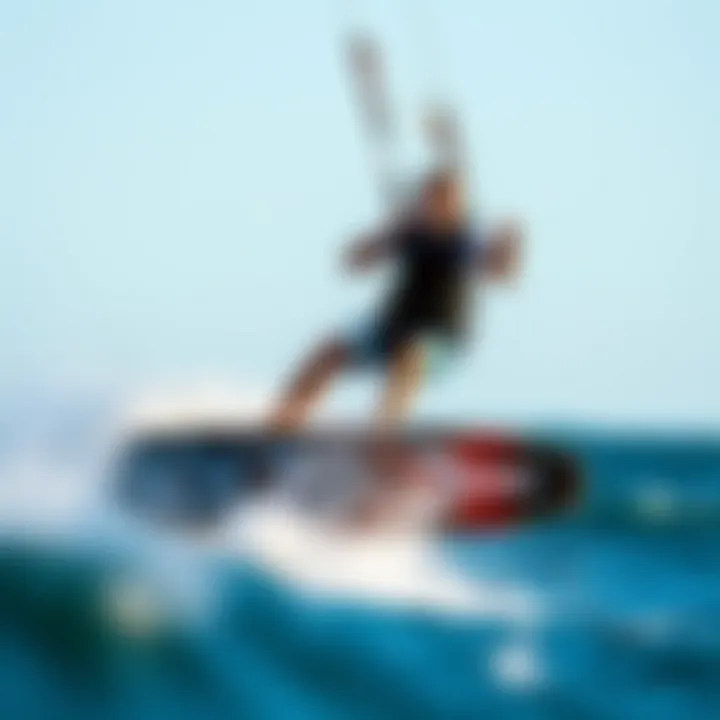
With advancements in material science and aerospace engineering, new technologies are reshaping the landscape of lift foils. Here are some notable developments:
- Carbon Nanotubes and Graphene: These materials are making their way into kiteboard construction, offering greater strength-to-weight ratios. This results in lighter foils that maintain high durability. It’s like having a featherweight champion in your equipment bag.
- Advanced Hydrodynamics: Computational fluid dynamics (CFD) applications allow designers to optimize foil shapes meticulously. This means that the next generation of lift foils will deliver better performance, catching the breeze more efficiently. Think of it as fine-tuning your kite to catch every last puff of wind.
- Smart Technology Integration: Sensors integrated into the foils could provide real-time data on the performance metrics. Imagine tracking your speed and performance on a connected device as you glide across the water—a real game changer for training and improvement.
These technologies don’t just offer marginal gains; they redefine the benchmarks of what's possible in kiteboarding, opening the door for riders to push the limits further than ever before.
Predictions for Kiteboarding Gear
As the industry gears up for these technological innovations, several trends in kiteboarding gear are emerging:
- Customization and Personalization: The use of 3D printing in manufacturing processes will allow riders to customize their gear. With tailored designs, everyone from weekend warriors to seasoned pros can have equipment that matches their specific needs.
- Eco-Friendly Materials: As the awareness of environmental impacts grows, kiteboarding manufacturers are likely to focus on sustainable materials. Innovations in biodegradable plastics and recycled materials can make a significant difference. Opting for eco-friendly gear will not only elevate performance but also promote a more sustainable future for our oceans.
- Modular Systems: Future kites and foils might adopt modular designs where components can be swapped out easily. This could mean faster repairs and upgrades, allowing kiteboarders to adapt their equipment based on varying conditions, saving both time and money.
The future of lift foils and kiteboarding gear is not a proclamation of what will be, but a promise of what can be achieved with collective imagination and innovation. The sky’s the limit!
As these technologies coalesce, the potential for kiteboarding grows exponentially. Keeping an eye on these trends can help kiteboarders stay ahead of the curve, ensuring they’re well-equipped for the adventures to come.
Broader Implications for Kiteboarding
Kiteboarding is more than just a thrilling sport—it's a community, a culture, and an avenue for innovation. Nick Leason's work with lift foils illustrates how technological advancements can reshape and elevate this vibrant world. Understanding the broader implications of these developments offers insights into how kiteboarding continues to evolve, both environmentally and socially.
Environmental Impact
The increasing focus on lift foils also sheds light on the environmental responsibilities of kiteboarding. As water sports thrive, so does the need for sustainability. Lift foils, designed with eco-friendly materials, are reshaping how products are manufactured. This push for eco-conscious design means kiteboarders are not only enjoying the thrill of the waves, but they're also taking steps to protect those very waves.
A few key points regarding the environmental impact include:
- Material Choices: Innovations in composite materials emphasize recycling and reduced carbon footprints.
- Eco-Friendly Manufacturing Processes: Manufacturers are now exploring ways to reduce waste and energy consumption during production.
- Awareness and Advocacy: As more riders adopt lift foils, there's a greater push for awareness around marine conservation efforts.
"For every kiteboarder that heads out, there's a chance to surf the line between adventure and responsibility."
This rising consciousness highlights a collective effort among practitioners to promote an eco-friendly culture within the sport. The expectation grows that future developments will continue on this sustainable path.
Community and Culture within Kiteboarding
Kiteboarding's community has cultivated a sense of belonging that transcends borders. Lift foils have sparked fresh dialogue, uniting enthusiasts in a shared passion.
As new technologies emerge, kiteboarding groups often adapt, leading to:
- Shared Learning: Riders exchange tips on using lift foils, fostering a collaborative learning environment. This culture is driven by experimentation, with many sharing their successes and failures.
- Inclusivity in Events: Competitions start to showcase a wider range of skill levels, emphasizing accessibility for newcomers. This diversification fuels the sport's spirit of camaraderie.
- Global Networking: The rise of online platforms enables connections among kiteboarders worldwide. Enthusiasts now share experiences, gear reviews, and travel adventures, proving that the power of the kite extends beyond just kitesurfing.
Lift foils serve as a nexus for these discussions, prompting riders to reconsider their collective identity and values within the sport. The thrill of kiteboarding isn’t merely in the act of gliding over water but in the bonds formed along the way.
Epilogue
In wrapping up our exploration of Nick Leason's contributions to lift foils in kiteboarding, it's crucial to take a step back and consider the broader impact of these advancements on the sport as a whole. Kiteboarding has been evolving for years, and innovations in technology like lift foils have reshaped the experience for both competitive athletes and weekend enthusiasts alike. The revolutionary designs spearheaded by Leason have not only enhanced performance but also opened doors for various riders to experience the sport at different levels.
Summary of Key Points
- Leason's Role: Nick Leason has pivotal role in the development of lift foils, demonstrating how passion and technical know-how align to forge new pathways in kiteboarding.
- Technological Innovation: The mechanics behind lift foils show a remarkable blend of aerodynamics and material science, enabling higher speeds, agility, and control on the water.
- Broader Impact: The implications extend beyond personal performance, influencing how the kiteboarding community interacts with the environment and each other.
- Future Trends: As technology progresses, the future of lift foils appears promising, with exciting developments on the horizon that could further enhance the kiteboarding experience.
The Future of Lift Foils and Kiteboarding
The future is bright for lift foils and kiteboarding as advancements in technology continue to unfold. Emerging innovations, such as materials that are lighter and stronger, will likely play a big role in design evolution. Additionally, sustainability will take center stage, with a growing push for eco-friendly materials and practices in the manufacturing process.
"The direction of kiteboarding could hinge on the balance between performance enhancement and environmental responsibility. This is where the future is heading."
As new kiteboarding gear emerges, we can expect to see a further democratization of the sport, allowing more people to partake in the thrill and excitement of riding the waves. Innovations inspired by Nick Leason will keep pushing the boundaries, ensuring that kiteboarding remains both a sport and an art form, beloved by riders from all walks of life. From exhilarating competition to serene recreation, lift foils are set to redefine experiences on the water.







